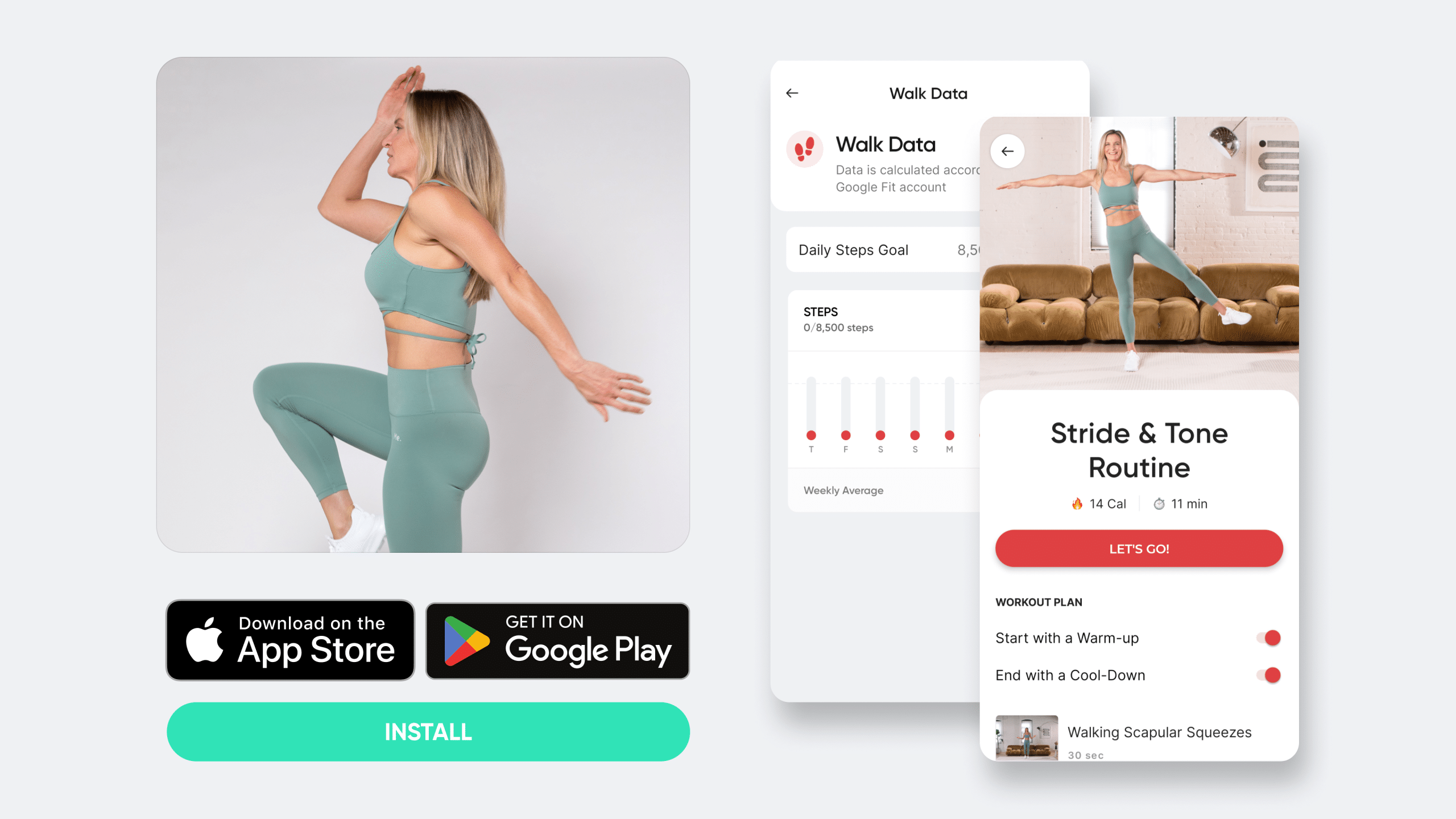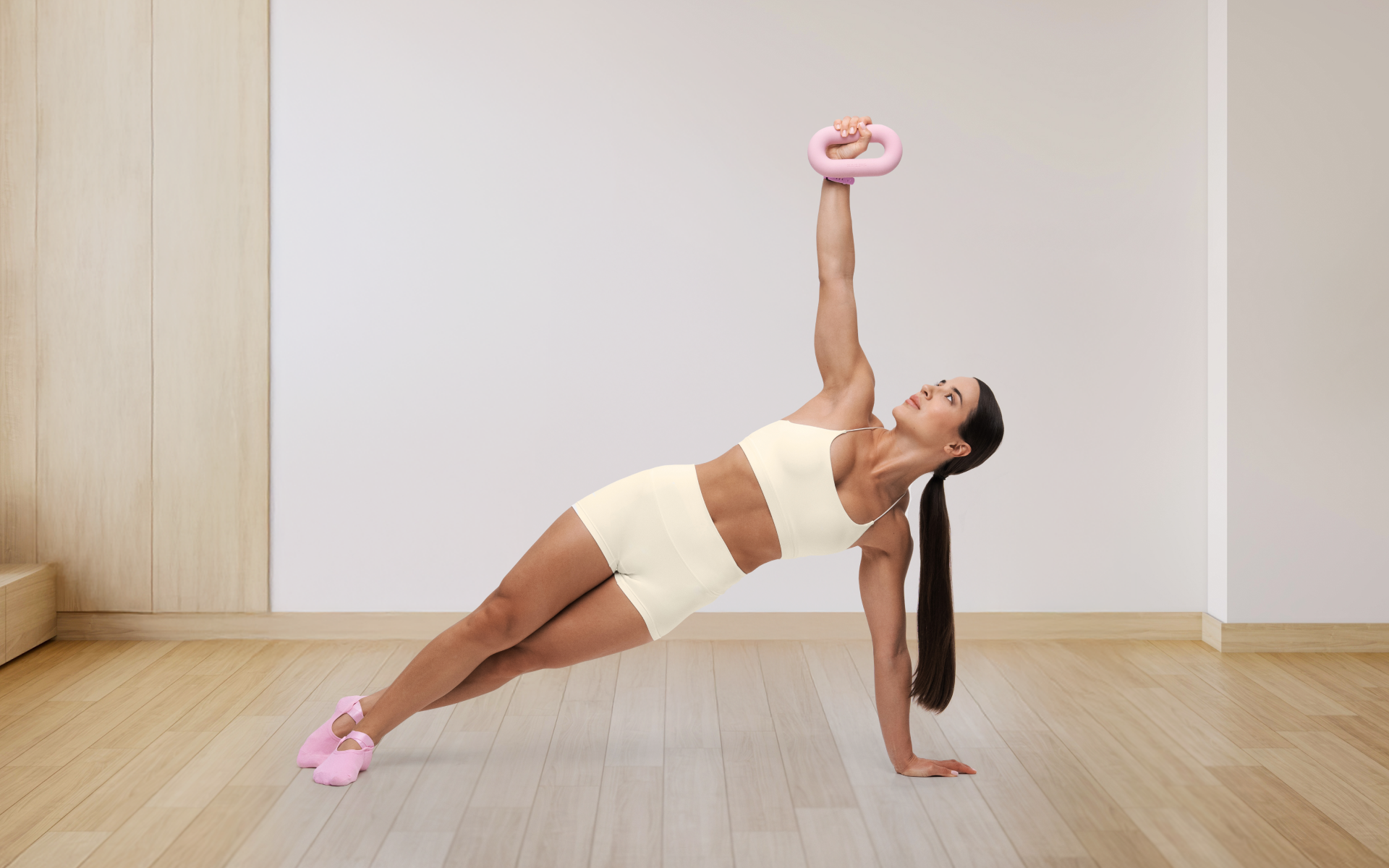Growing old is inevitable, but how you grow older is up to you. As a woman, the ‘aging thing’ starts as early as in the mid to late 30s. Not only do you start losing your reproductive ability and bone mass, you also lose muscle. And as your muscles help burn some calories, losing them might make you more susceptible to weight gain. If you’re obsessed with dieting to cut excess pounds, you can even lose more muscle to make matters worse. So, what muscle-building tips should you abide by after 40 in workouts, routines, and diet to avoid all this?
If you’re a female who is worried about gaining weight and losing muscle after 40, then you’re not alone. Fortunately, maintaining a healthy and strong body is possible regardless of your age. By adhering to the necessary female strength training for women tips, you can build or maintain your muscle mass as you enter your 40s. If you were thinking that hitting 40 means trading your dumbbells for a mobility wheelchair or scooter, you can be forgiven for such thoughts.
Is it Too Late to Build Muscle at 40?
It’s never too late to start building muscle, regardless of your age. Whether you’re 40, 50, or even 60 years old, it’s always possible to build and maintain a strong and healthy body. In fact, studies have shown that older individuals who engage in regular strength training can still significantly increase their muscle mass.
However, it’s important to keep in mind that as you age, your body’s ability to build and maintain muscle decreases. This is due to hormonal changes, lifestyle factors, and a decrease in physical activity. Therefore, it’s important to adjust your training and diet accordingly as you age.
Here are some challenges you may encounter while attempting your over 40 body transformation as a female:
- Metabolism slows down: As you age, the rate at which you burn energy will decrease. Even if your daily routine doesn’t change much, it’s common for fewer of the calories you take in to be burned.
- You’ll lose estrogen: As you approach menopause, your ovaries will reduce the production of this hormone. The reduction will start at perimenopause and finalize in menopause. The loss of this hormone may affect metabolism and lead to increased fat storage (14).
- Loss of other hormones: Hormones such as testosterone are much lower at 40 than when you were 30. They will further reduce with menopause. Diminishing the levels of testosterone, GH, and others may make you more vulnerable to muscle loss.
- Bone loss: As you age, you’ll also lose your bone density. This can result in other serious issues such as osteoporosis. Your muscle mass has a direct relationship with bone density, and they tend to increase and decrease together.
You may also experience other changes that are not related to weight and muscles such as hair loss, memory loss, urinary problems, and unpredictable menstrual periods(8).
Reasons why BetterMe is a safe bet: a wide range of calorie-blasting workouts, finger-licking recipes, 24/7 support, challenges that’ll keep you on your best game, and that just scratches the surface! Start using our app and watch the magic happen.
Can a Woman Build Muscles After 40?
Yes. Women in their forties can build muscles. However, you will face some challenges, but these bumps along the journey are nothing new to your experience as a female.
If you step out of your comfort zone and take muscle-building seriously, you’ll make incredible things happen. The only key to achieving positive results is to keep pushing on (3).
How Long Does it Take to Build Muscle After 40?
If you’re just starting, you should lift lighter weights. If you keep working out with heavy ones all the time, you may experience pain in some body parts such as the wrists or elbows.
So, if you start lifting lighter weights, it can take weeks or even months for you to become used to training. Generally, the amount of time taken to build your muscle mass will be dependent on factors including your body type and workout routine.
For lean, fit, and healthy people, gaining extra muscles will require a chunk of time, sweat, and effort. For people who are obese, overweight, or with low muscle mass, progress will be made more quickly (6).
How to Start Getting Fit After 40
If you’ve never imagined yourself doing push-ups or lifting weights, you may be afraid to start. However, you shouldn’t be scared of jumping in as you’ll reap a lot of benefits. Here are some tips to help you start on your fitness journey:
- Start with a trainer: If you can’t hire their services, then download some training apps or watch videos online to guide you on how to reduce the risk of injuring yourself.
- Don’t be afraid: The weightlifting room will undoubtedly be scary for some of you. However, you shouldn’t be scared as lifting weights is all about challenging your muscles. In the end, your confidence will be boosted.
- Take a free day between your workouts: If you’ve never trained before, start with two or three days a week. This ensures that you have a day to recover between your sessions. You should target a different body part in every session. After 2 to 3 weeks, you can add more workout days to your schedule (9).
- Have a plan: When you get into the gym, start with about 15 minutes of stretching. Head for other types of workouts according to your plan.
- Lift lighter weights: Start with a weight you can manage to lift 10 times in 3 sets.
- Modify your plan every fortnight: After a couple of weeks, make sure you increase the amount of weight you’re lifting. This will ensure that you progress and level up.
Finally, you should listen to your body. When it’s time to rest, just rest – don’t continue with your workouts.
How to Build Muscle Mass
The only way you can build muscle mass is through workouts. So, if you thought dieting alone could make you gain muscle mass, you’re terribly wrong.
By lifting weights now and then, you’ll challenge your muscles, which gives them a reason to grow (1).
Read more: How To Boost Metabolism After 40: Tips & Tricks To Rev Your Metabolic Rate
How to Build Muscle for Women
The basics of building muscle are the same for both women and men. There isn’t anything different you’re supposed to do as a woman. You need to incorporate strength training into your exercise.
Just because you’re a woman, it doesn’t mean you can gain muscles just by altering your diet or focusing on only cardiovascular exercises. You must go to the gym and lift some barbells and dumbbells so you can achieve the desired results (18).
How to Build Muscles Through Weight Training for Women After 40
Even though you’re old enough to have difficulty recalling childhood songs, this doesn’t necessarily mean that your program should only involve less strenuous exercises such as deep breathing. If you want to gain muscle mass, you must get out and lift those heavy weights. Here are some tips you should follow for effective results (12).
1. Ignore the Myths
Many myths can make you hesitate to start weight training. In most cases, these “facts” are baseless and should be ignored.
For example, you may be afraid of becoming too muscular and bulky because of lifting weights. The American Council on Exercise explains that the female body’s physiology makes this myth unfounded. This is because women produce less testosterone than men, so you can increase your muscle mass without adding pounds of bulky muscles.
Another myth is that strength training for women can increase hypertension (blood pressure). While this is somewhat true, it is only a short-term effect. Lifting weights causes a temporary spike in your blood pressure, but in the long term, exercise can actually help lower your blood pressure, according to the Mayo Clinic (18).
2. Know the Benefits
If you’re as busy as most women in their 40s, you might be tempted to skip the weightlifting portion of your workout, but this oversight could see you miss out on a lot of important benefits.
The Mayo Clinic states that a female can reap a lot of rewards by building muscles. Some building muscles after 40 benefits include:
- Weight loss for women over 50: Resistance training can help keep your weight at healthy levels. This is particularly true as it increases your metabolic rate so that you can support and maintain your larger muscles (10). The metabolic boost will see you burn a lot more calories than you ordinarily would.
- Helps you improve your balance: For example, if you’re building muscle in your legs after 40, you’ll stabilize yourself. As your strength increases, you may also avoid many health issues such as depression, heart disease, obesity, and back pain.
- Prevents muscle loss: Both men and women tend to lose muscle as they age. Strength training can help prevent or minimize this (17).
- Reduces musculoskeletal injury risks: As you become older, you’ll start to lose your muscle mass and bone. This may reduce your strength and mobility, which increases the risk of musculoskeletal injuries such as fractures, strains, and sprains.
However, training will cause you to strengthen your muscles, joints, and tendons as you age. Several studies have linked lifting weights to an increase in bone mineral density (13).
3. Evaluate Your Diet
Now that you know the benefits and myths of lifting weights, it’s time to get started. The first step is to make sure what you eat supports your goals.
The Cleveland Clinic has reported that eating proteins can help prevent muscle loss as you get older. This is because they provide the building blocks to repair and build your muscles after workouts.
Scientists suggest taking at least 0.8 grams of high-quality proteins each day for every kilogram of your weight. For example, if you’re a 65 kg (143 pound) female, you should take in 52 grams of proteins (7).
However, you will most likely need more than this minimum to support a strength training regimen and build or maintain muscle mass. Around 1.2 grams of protein per kilogram of body weight may be more appropriate.
BetterMe app will provide you with a host of fat-frying fitness routines that’ll scare the extra pounds away and turn your body into a masterpiece! Get your life moving in the right direction with BetterMe!
In addition to consuming proteins, you should adhere to the following practices:
- Eat fruits and vegetables: Half of your plate should contain fruits and vegetables. This is because they have more nutrients and less calories than other food groups.
- Don’t skip breakfast: Eat a healthy meal such as oatmeal, whole-grain toast, or fruits to keep hunger at bay. This will ensure that you don’t eat too many high-calorie snacks due to temptations. Remember that you also need enough food to fuel your workouts.
- Cook healthy meals: Don’t add too much fat or oil, but don’t eliminate it completely. Try grilling, boiling, or baking. Also, don’t under-eat as you’re burning a lot of calories in your workouts.
- Lay off soda: Switch to water or unsweetened drinks. This will reduce your added sugar intake, which can promote weight gain.
- Don’t take alcohol: Alcoholic beverages contain a lot of calories and they may make you more likely to eat more food than you otherwise would. So, if you drink alcohol regularly, you may be consuming a lot of excess calories without realizing it.
To summarize, you need energy and nutrients to stay healthy and fuel your workouts. If you’re trying to lose weight, you need to eat fewer calories to create a calorie deficit.
4. Embrace Light Weights
If you lift heavy weights, you may injure yourself. If you get aches and pains in any part of your body, you are likely to stop your training. If you get injured, you need to stop training and seek treatment.
Even if you take weeks or months to get used to heavier weights, it is worth it to avoid injuring yourself.
Several studies have shown that lighter weights and high reps do a good job with building your muscles.
In one study, high reps and light weights were found to stimulate muscle growth and strength as much as heavy weights and lower reps (15).
Therefore, light and medium weights can successfully help you build your muscles as you hit your forties.
5. Take Care of Your Joints
If your joints are giving you some grief, try using elbow or knee sleeves when training. Their benefits include warmth and compression, both of which make your ligaments and tendons a lot happier when you’re lifting weights.
Bodybuilder Gary Gibson noted that warm ligaments perform well under load compared to cold ones. According to him, they’re less likely to get injured.
Please note that sleeves are not a magical cure for elbow and knee pain, but they’re definitely worth trying. They have helped many people and they may well benefit you too (2).
6. Don’t Overdo It
Getting out and feeling like you’ve just done a few rounds with Mike Tyson may leave you thinking you’ve made it. However, this is not always the case.
You need to structure your efforts so you can move toward the goal of building muscles. This means that you must have days where you lift lighter weights and others where you lift heavier and harder.
If you push your body to its limit on every workout session, the results may not be that good.
First, you may feel tired and be unable to sleep. At 1 o’clock, you may find yourself staring at your ceiling wondering why you’re still awake. You will end up waking up feeling as tired as you were the day before. You’ll feel moody, irritable, and very anxious. Worst of all, you may end up not getting the expected results.
So, you should divide your workouts at different levels of intensity. Don’t work out at maximum effort every time. Building muscles doesn’t require you to keep pushing your body to the absolute limit in every session (20).
7. Stretch Tight Muscles
Stretching exercises have become controversial recently. Some researchers believe that they don’t do what they’re supposed to.
One study found that stretching has minimal effects on muscle soreness and doesn’t significantly prevent injuries (16).
However, if you feel ‘tight’ in a specific area of your body, you should experiment with some stretching to see if you feel better.
Aim to stretch any sore muscle for approximately 60 seconds every day. Doing this has been linked to more improved flexibility than a 30-second or 15-second stretch in a group of people aged over 65 (19).
8. Know Your Body Type
Some people have a body type that makes them better suited to certain workouts than others.
You may find it difficult to do deep squats with a barbell across your shoulders. You may also not be built for chin-ups or deadlifts from the floor.
For example, if you have short arms and long legs, you’ll find it more difficult to do a deadlift from the floor than someone who has short legs and longer arms.
If you can’t do something, don’t force yourself to do it. Modify it or ditch it and find something similar. After all, training at 40 doesn’t require a full range of motion. Also, there isn’t a “must-do” workout that can’t be replaced with another one.
Read more: How To Start Getting Fit After 40: It’s Never Too Late To Reap The Benefits of Physical Fitness
9. Have New Ways to Train Your Muscles
To build your mass, you need to find new challenges. You must give your muscles a reason to grow or get stuck at one size.
So, you should increase the amount of weight you lift in every session. If you can complete a certain number of cycles with a given weight, move up to a higher weight.
However, adding weights can cause your joints to flare up as you get older. So what should you do? Do you just accept that you can’t build muscles in your 40s and that it’s really impossible?
Well, it turns out that adding weights isn’t the only way you can train your muscles. You could also perform more cycles with your current weight, reduce the speed at which you lift them, and introduce techniques such as static holds and drop sets. Make sure you work your muscles so they have a reason to grow.
10. Be Patient
You’ll see teens walk into the gym, do a few cycles of warm-ups, and then go straight for some heavy stuff.
If you’re in your 40s, you shouldn’t try that. This approach can lead to injury. Take your time and warm up properly before lifting heavy stuff.
Building muscle mass after 40 is not that easy. You have more stuff going into your head than you did two decades ago, which makes it difficult to pay attention to your diet and workouts. However, you may find the above building muscle after 40 for females tips useful.
FAQs
What foods build muscle after 40 for women?
Protein-rich foods are essential for building muscle, particularly after the age of 40.
Examples of protein-rich foods to have in your building muscle after 40 female diet include lean meats (such as chicken, fish, and turkey), eggs, tofu, beans and legumes, nuts and seeds, and dairy products such as Greek yogurt and cottage cheese. These foods provide essential amino acids that are essential for muscle growth and repair.
In addition, incorporating carbohydrates and healthy fats into your diet can help with muscle building and provide you with the necessary energy for workouts.
You may want to look into meal timing in our guide: Intermittent Fasting for Women Over 40
Are supplements necessary for building muscle after 40?
Supplements are not necessarily required for building muscle after the age of 40, but they can be beneficial in certain cases. For example, if you have dietary restrictions or struggle to consume enough protein through whole foods, a protein supplement may help you satisfy your daily protein needs.
Creatine supplements have also been proven to improve muscle strength and mass in older adults. However, it’s important to consult a healthcare professional before you start taking any new supplements.
How much protein do I need to build muscle in my 40s?
You need approximately 1.2 grams of protein per kilogram of body weight to build muscle in your 40s. However, this amount may vary based on individual factors such as activity level and overall health.
It’s also important to distribute your protein intake evenly throughout the day, rather than consuming it all in one meal. This will ensure your muscles have a steady supply of amino acids for growth and repair.
We discuss protein intake for people over 40 in more detail here: How To Boost Metabolism After 40
Can a 40-year-old woman get toned?
Yes, women over the age of 40 can still gain significant muscle mass. While hormonal changes and decreased activity levels may make it more challenging to build muscle, it’s still possible with the right diet and exercise routine.
Strength training has been shown to be particularly beneficial for women over 40 as it can help prevent age-related muscle loss and improve overall health and mobility (5).
How often should women over 40 train to build muscle?
The frequency of strength training sessions for women over 40 will vary depending on your individual goals, abilities, and schedules. However, it’s recommended to engage in strength training at least two to three times a week for optimal muscle-building results. It’s also important to allow for adequate rest and recovery between workouts.
You’ll find exercise ideas for active rest days here: Wall Pilates Exercises For Beginners, Seniors, And Anyone Looking For A Change
Is 40 too old to start bodybuilding?
40 is not too old to start bodybuilding. In fact, many individuals over 40 have successfully built significant muscle mass through consistent training and proper nutrition.
As with any fitness journey at any age, it’s important to start slowly and gradually increase intensity and weight as your strength and abilities improve. It’s also important to listen to your body and take rest days when you need to in order to avoid injury.
DISCLAIMER:
This article is intended for general informational purposes only and does not serve to address individual circumstances. It is not a substitute for professional advice or help and should not be relied on for making any kind of decision-making. Any action taken as a direct or indirect result of the information in this article is entirely at your own risk and is your sole responsibility.
BetterMe, its content staff, and its medical advisors accept no responsibility for inaccuracies, errors, misstatements, inconsistencies, or omissions and specifically disclaim any liability, loss or risk, personal, professional or otherwise, which may be incurred as a consequence, directly or indirectly, of the use and/or application of any content.
You should always seek the advice of your physician or other qualified health provider with any questions you may have regarding a medical condition or your specific situation. Never disregard professional medical advice or delay seeking it because of BetterMe content. If you suspect or think you may have a medical emergency, call your doctor.
SOURCES
- Benefits of Exercise (2021, medlineplus.gov)
- Clinical outcomes of the addition of eccentrics for rehabilitation of previously failed treatments of golfers elbow (2014, pubmed.ncbi.nlm.nih.gov)
- Effects of cross-training on markers of insulin resistance/hyperinsulinemia (1997, pubmed.ncbi.nlm.nih.gov)
- Heavy-load eccentric calf muscle training for the treatment of chronic Achilles tendinosis (1998, pubmed.ncbi.nlm.nih.gov)
- How can strength training build healthier bodies as we age? (2022, nia.nih.gov)
- How long does it take to build muscle? (2018, medicalnewstoday.com)
- How much protein do you need every day? (2015, health.harvard.edu)
- How to Age Well (nd, nytimes.com)
- How to build muscle with exercise (2020, medicalnewstoday.com)
- How to stay healthy over 40: the doctor who prescribes weights and protein (2023, thetimes.co.uk)
- Long-term strength and balance training in prevention of decline in muscle strength and mobility in older adults (2020, pubmed.ncbi.nlm.nih.gov)
- Losing weight after 40: 10 ways to drop fat and build muscle, according to weight loss experts (2023, womenshealthmag.com)
- Menopause, Weight Gain, and Exercise Tips (2019, webmd.com)
- Neither load nor systemic hormones determine resistance training-mediated hypertrophy or strength gains in resistance-trained young men (2016, pubmed.ncbi.nlm.nih.gov)
- Strength training: Get stronger, leaner, healthier (2019, mayoclinic.org)
- Stretching Before and After Exercise: Effect on Muscle Soreness and Injury Risk (200)
- The Basics: Build Muscle for Better Health (2006, webmd.com)
- The effect of duration of stretching of the hamstring muscle group for increasing range of motion in people aged 65 years or older (2001, pubmed.ncbi.nlm.nih.gov)
- Too much exercise could lead to bad decisions on what you eat and buy (2019, edition.cnn.com)
- Weightlifting: Bad for your blood pressure? (2019, mayoclinic.org)











